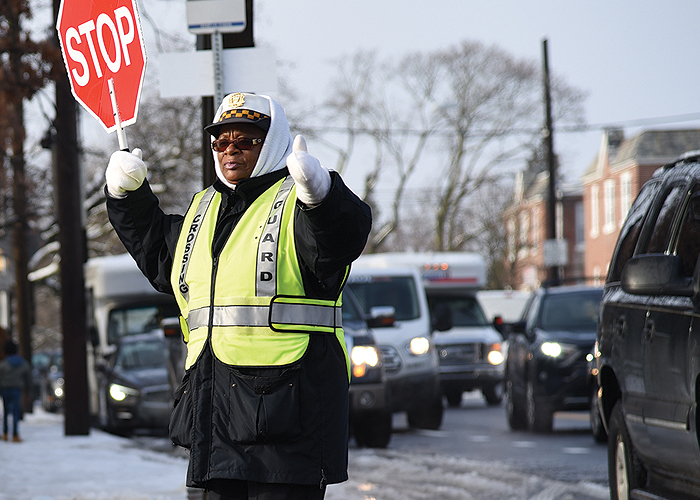WASHINGTON — When Anthony Taylor stepped into the crosswalk outside Washington Township High School in Indianapolis one August morning in 2018, he didn’t expect his next memory to be waking up in a hospital bed. A car carrying a young boy and his mother struck him as he tried to help students cross safely. Taylor suffered a fractured pelvis and other broken bones but eventually returned to work.
Taylor is one of hundreds of school crossing guards across the country who have been injured or killed by vehicles while trying to protect children. An investigation by The Associated Press and Cox Media Group Television Stations found that over the past decade, hundreds of school crossing guards—many of them retirees—have been struck by cars, and dozens have died.
A comprehensive accounting remains elusive. No federal agency tracks these incidents, and only two states—New Jersey and Massachusetts—collect specific data. Local police reports often classify crossing guards simply as pedestrians, making it impossible to determine the true scale of the problem.
A database compiled by AP and Cox Media Group identified at least 230 crossing guards hit by vehicles across 37 states and Washington, D.C. Nearly three dozen of those cases were fatal.
Minimal Consequences for Drivers
The investigation also revealed that drivers involved in such collisions rarely face serious penalties. Of the 183 cases where outcomes could be confirmed, nearly half resulted in routine traffic citations such as “failure to yield to a pedestrian.” About a quarter of the drivers faced no punishment, and slightly more than a quarter were charged criminally.
Police say factors such as weather, visibility, or perceived negligence influence charging decisions. However, safety experts argue that the lack of accountability and inconsistent laws leave crossing guards vulnerable.
“It’s a huge responsibility to step out in front of a vehicle,” said Dacia Maisonave, a crossing guard trainer in Florida. “The only thing they really have to protect them is the stop paddle.”
A Deadly, Underreported Job
Crossing guards fall under the same labor category as road construction flaggers, making it difficult to isolate their fatality rate. However, AP’s analysis of U.S. Bureau of Labor Statistics data found that crossing guards and flaggers rank among the top fifth of the deadliest jobs in America, comparable to power line installers and air transportation workers.
Despite the risk, there are few nationwide safety standards. The National Highway Traffic Safety Administration does not record whether crash victims were crossing guards, and OSHA has only a handful of related reports.
New Jersey and Massachusetts stand out for their efforts to improve safety. Following the deaths and injuries of multiple guards, both states have implemented inspection programs and mandatory injury reporting systems. Still, officials admit that without national standards, progress remains limited.
Preventable Tragedies
In Fort Mill, South Carolina, 61-year-old Stanley Brucker was fatally struck while directing traffic at an elementary school. Video captured the moment he was hit by a car that flipped him into the air. The driver was not charged, prompting outrage from fellow guards and Brucker’s family, who have since filed a lawsuit against the school district.
Similar cases abound nationwide. James Arthur Holland, a Lexington, Kentucky crossing guard, was killed in 2023 by an uninsured, unlicensed driver. In Gardner, Kansas, 76-year-old Dave Peavy was hit and killed by a car whose driver blamed sunlight glare. No charges were filed.
“The sun was in my eyes” appears repeatedly in police reports reviewed by AP and Cox Media Group.
Calls for Reform
Experts say that stronger safety measures could prevent many of these deaths. Recommendations include installing flashing LED crosswalk systems, adding speed cameras and raised crosswalks, and mandating high-visibility gear for all guards.
Former North Carolina police chief Bence Hoyle suggests harsher penalties for speeding in school zones—up to $1,000 per infraction—and using license plate recognition systems to track reckless drivers. Others, like Detective Kevin VanFleet in California, argue that more consistent police presence would be the most effective deterrent.
Human Toll and Resilience
Beyond the statistics are stories of loss and endurance. Families of victims often struggle with funeral costs, while survivors face long recoveries and medical bills without benefits.
Ron Ferguson, a crossing guard from Texas, was hit by a truck in 2020, suffering a cracked skull and lasting cognitive issues. “There are times I can see people now that I cannot remember their names,” he said.
Despite the dangers, many guards remain dedicated. Social media groups like Crossing Guard Chronicles on TikTok and the National Association of School Crossing Guards on Facebook have become advocacy hubs, pushing for body cameras, better training, and community awareness.
For Anthony Taylor, who nearly lost his life, the mission remains worth it.
“I like what I do, and I enjoy being around the public,” he said. “That’s what made me decide that, hey, I’m going back to finish out what I was there to start.”

